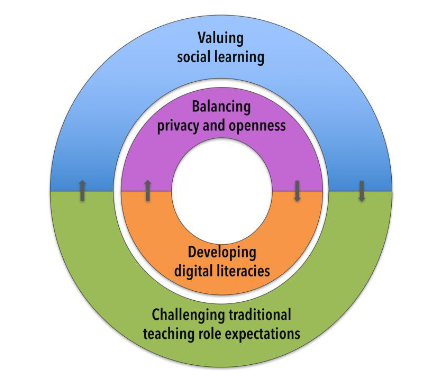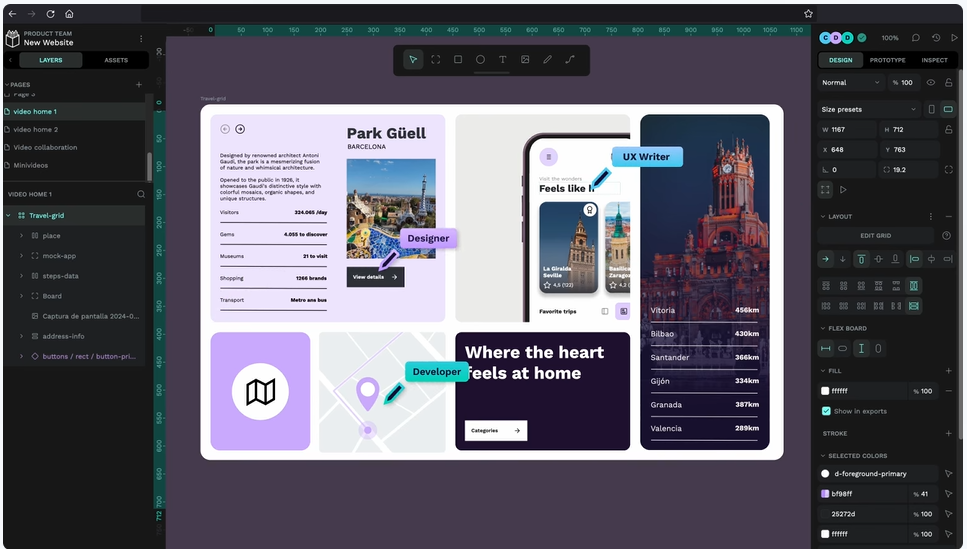This week’s reading, Openness and Praxis: Exploring the Use of Open Educational Practices in Higher Education by Catherine Cronin (2017), provided great detail into the nuance of open educational practices (OEP) that I had not previously considered. It was particularly interesting in hearing the dimensions shared by educators using OEP. Pursuing OEP seems like a tricky, but well worth it, balancing act. I particularly resonate with the point about developing digital literacies. I believe technology is an integral, and inevitable, part of our future. Being able to understand and adapt to ever-evolving technologies allows learners to stay afloat in our online society. Open resources are a great way to develop those related competencies.

Note. This figure was created by Cathrine Cronin in 2017 that shares her findings of the four dimensions shared by educators using OEP. From “Openness and Praxis: Exploring the Use of Open Educational Practices in Higher Education” by Cathrine Cronin, 2017, International Review of Research in Open and Distributed Learning, 18(5), p. 9.
Skimming through the references in the Openness and Praxis paper, Pedagogy, Technology, and the Example of Open Educational Resources by Robin DeRosa and Scott Robison (2015) caught my eye. This publication argues against using technologies in the classroom solely because they are new and flashy. Instead, it explains how technology can be used to advance learning and empower students within the context of Open Educational Resources (OER). Once again, I am a big advocate to being exposed to technologies that support ideation and the learning journey. Opportunities to invite growth rather than stagnation should, in my opinion, always be favoured in academia.
I found this resource, OER Commons, which compiles a variety of open educational resources for institutions, educators, and learners to explore. It also allows people to create and share their own OERs. They also have various OER collections related to technology, such as artificial intelligence (AI).
This got me thinking, what types of technologies could benefit from being open source that many people may not know about? Reflecting on my own professional and personal interests, three applications come to mind. My professional interests lie in project management and prototyping. My personal interests are in graphic design. As such, some of the applications I use quite frequently are the JIRA Project Management Software, Figma (a prototyping software) and Canva (a graphic design software). I decided I wanted to challenge myself to find potential open alternatives to the three software. This is what I found:
JIRA Project Management Software OpenProject
Based on my preliminary research on this software, it behaves pretty much exactly the same as the JIRA Project Management Software except it is open source and provides both a cloud and on-premises edition. All the exciting new features of JIRA that come with a cost are freely available using OpenProject.

This screen capture is taken from the OpenProject website that showcases how to create a work package in OpenProject.
Figma PenPot
Similar to OpenProject and JIRA Project Management Software, PenPot offers practically the same capabilities as Figma however does so as an open-source technology. Even the interfaces are incredibly similar. However, what I do enjoy more about PenPot compared to Figma is that PenPot has an option for users to directly code HTML, CSS or SVG into their designs.
Canva
Although I searched far and wide, unfortunately there is currently no open-source alternative to Canva that is quite as seamless or user friendly. I came across various open-source photo editing software however they are not comparable to what Canva has to offer. While I am disappointed that I wasn’t successful in finding an alternative to Canva, I am hopeful that an open-source option will be available in the future.
References
Berdygylyjova, M. (2025, March 10). OpenProject: The open source alternative to Jira. OpenProject.Org. https://www.openproject.org/blog/open-source-jira-alternative/
Canva. (n.d.). Canva. https://www.canva.com/
Cronin, C. (2017). Openness and Praxis: Exploring the Use of Open Educational Practices in Higher Education. The International Review of Research in Open and Distributed Learning, 18(5). https://doi.org/10.19173/irrodl.v18i5.3096
DeRosa, R., & Robison, S. (2015). Pedagogy, technology, and the example of open educational resources. EDUCAUSE Review. Retrieved from http://er.educause.edu/articles/2015/11/pedagogy-technology-and-the-example-of-open-educational-resources
Figma: The Collaborative Interface Design Tool. (n.d.). Figma. Retrieved June 9, 2025, from https://www.figma.com/
Jira | Issue & Project Tracking Software | Atlassian. (n.d.). Retrieved June 9, 2025, from https://www.atlassian.com/software/jira
OER Commons. (n.d.). OER Commons. Retrieved June 9, 2025, from https://oercommons.org/
Penpot: The Design Tool for Design & Code Collaboration. (n.d.). Retrieved June 9, 2025, from https://penpot.app/

Hi Eleonora,
You really went above and beyond for this week’s reflection, wow! Thank you for providing open alternatives to those software. I used JIRA for previous co-ops and I wanted the chance to develop my skills with it better, so I will definitely look into using OpenProject!
I also found Jon Dron’s points about intrinsic motivation to be thought-provoking. I’ve often relied on external rewards like grades or deadlines to stay on track, but your reflection made me think more deeply about how this might be limiting my own drive for learning. I admire your openness to giving this new approach a genuine try. Going out of one’s comfort zone is intimidating but can be really rewarding!
Your example about learning a new language really hit home. I felt that way when I was learning how to read Korean, which is not something I did until later in life. It’s a good illustration of how our motivation can shift based on how we define success or progress.
Thank you again for your thoughtful insight!